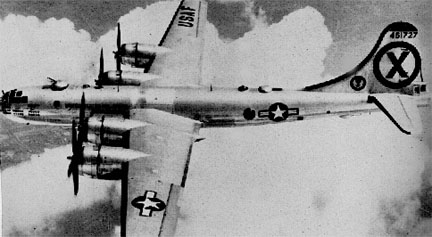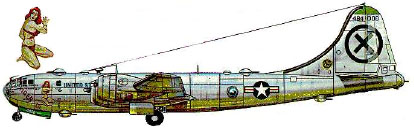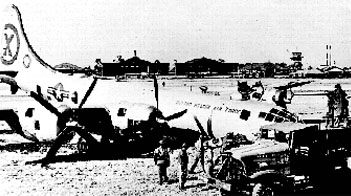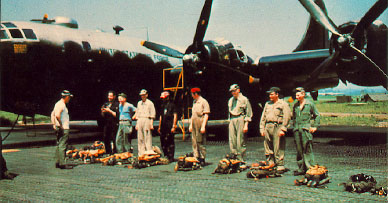|
History Notes Chapter 4, Page 1 of 3 Strategic Shift: Korean War Sacrifices |
|||||||||||||||||
| After the Second World War, the U.S. once again quickly dismantled its military might. While the drawdown had an impact on the 91st, the demands for mapping and charting services continued, undiminished. In April 1946, the 91st was moved to MacDill Field, Florida and then six months later to Howard Field, Panama where it continued to conduct photographic, mapping and charting missions from a variety of bases of operation in Central and South America. |
|||||||||||||||||
|
RB-29 #44-61727, of the 91st SRS, enroute on mission to North Korea |
 |
||||||||||||||||
In March of 1949, the 91st Squadron, now redesignated as the 91st Strategic Reconnaissance Squadron, was reassigned to McGuire AFB, New Jersey. The unit continued to develop its photographic capability through training and lessons learned from World War II missions. Unfortunately, the 91st, as well as the rest of the Air Force lost many of its skilled technicians and pilots. |
|||||||||||||||||
|
of “Tiger Lil” aircraft mark-up and nose art. |
 |
||||||||||||||||
| When North Korean troops invaded South Korea, the U.S. was again caught by surprise. Not only did the U.S. not have the ground troops and military weaponry necessary to stop this invasion but it did not have the air power needed as well. One area particularly deficient was aerial photography and reconnaissance. As one of the best equipped photo reconnaissance units in the USAF, General MacArthur quickly called on the 91st to join the Far East Air Forces (FEAF) fighting on the Korean peninsula. The 91st Strategic Reconnaissance Squadron was moved from McGuire AFB, NJ to Johnson and Yakota ABs, Japan to begin supporting United Nations (UN) troops in Korea. |
|||||||||||||||||
|
(1) |
|||||||||||||||||
 |
|||||||||||||||||
| The 31st SRS, Stationed at Kadena AB, Okinawa, was simultaneously moved to Japan, to become a part of the 91st SRS. Thus strengthened, the 91st eventually flew the largest number of different airframes in the Korean War and had more assigned personnel than any other flying unit in the Korean War. With over 800 assigned personnel, they had six different types of aircraft assigned, to include: the RB-29, RB-50, RB-45, WB-26, KB-29 and RB-36. (2) Throughout the conflict though, the RB-29 and RB-50s were the workhorses of the unit. The RB-50 was a modification of the high altitude bomber built towards the end of World War II to bomb Japan. |
|||||||||||||||||
|
“Flack Shack,” was caught by MiGs near the Yalu and flew back to crash land at Yokota. |
|||||||||||||||||
 |
|||||||||||||||||
|
1st Lt. John Marks (now Ret. Maj. Gen) is the third crewman from the right. (3) |
|||||||||||||||||
 |
|||||||||||||||||
|
Attributions 1 Planes, Names and Dames, Larry Davis, Squadron/Signal Publications, Vol II: 1946-1960, page 12.. 2. Air War Over Korea, Larry Davis, Carrollton, Texas: Squadron/Signal Publications, page 55. 3. The B-29 Book, Frederick A. Johnsen, Bomber Books, 1978, Back Cover. |
|||||||||||||||||
|
End of Page 1 of 3 Pages, Chapter 4 Go to Page 2 Cover — Table of Contents — Introduction Chapters — 1 — 2 — 3 — 4 — 5 — 6 — 7 |
|||||||||||||||||